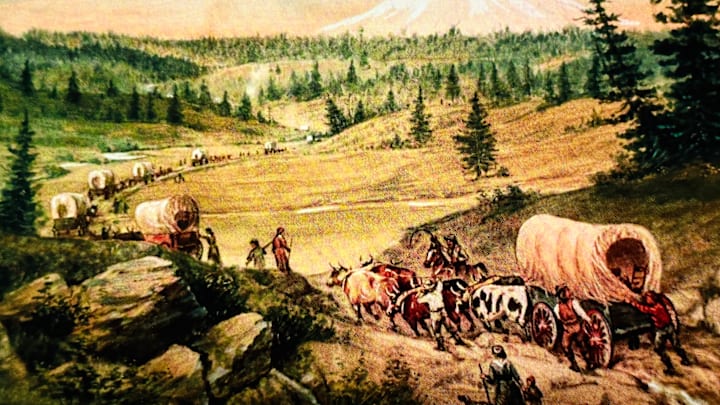You have died of dysentery.
These are five words familiar to anyone who has attempted to caulk a wagon and ford rivers en route to the Willamette Valley. Oregon Trail not only taught generations of kids about Western migration in 19th-century America, it also introduced them to various strange-sounding diseases. Let’s catch up with some of those diseases and find out if they’re just as nasty today.
Cholera
Then: One of the biggest killers on the actual Oregon Trail, cholera is an intestinal infection caused by ingesting the bacteria Vibrio cholerae. Spread through contaminated food or water, the pathogen releases an enterotoxin that effectively floods the intestines with excess water. This leads to continual watery diarrhea, causing severe dehydration and often death.
Now: According to the Centers for Disease Control and Prevention, cholera remains a global pandemic. Today, we have vaccines for the disease, and symptoms can be treated with a regimen of fluids and electrolytes, as well as antibiotics. The best defense remains stringent sanitation regulations, a luxury afforded primarily to industrialized countries. Between October 23 and November 25, 2024, nearly 29,000 new cholera cases were recorded worldwide.
Diphtheria
Then: Caused by a toxin produced by Corynebacterium diphtheriae, diphtheria is an airborne bacterial disease. It usually shows up first in the nose and throat, but can also surface as skin lesions. A gray, fibrous material grows over airways, causing difficulty breathing and sometimes uncontrollable drooling, as well as a deep cough and chills. Diphtheria was most common on the Oregon Trail during the winter months.
Now: Routine childhood immunizations have nearly erased diphtheria in the U.S. In 2023, there were nearly 25,000 cases of diphtheria worldwide. The disease is rarely fatal if a person is vaccinated and receives treatment.
Dysentery
Then: Dysentery (a.k.a. shigellosis) is caused by Shigella bacteria and results in bloody diarrhea, which can lead to severe dehydration and death. Like cholera, dysentery spreads via contaminated water and food, but it was not as widespread on the trails as cholera. Dysentery was a bigger problem on Civil War battlefields.
Now: Dysentery is still a major threat to the developing world. Not only is there no effective vaccine; recent strains are increasingly resistant to antibiotics—the only proven line of defense in tandem with fluids.
Measles
Then: Highly contagious measles ravaged the United States in the 19th century. Complications from measles, like bronchitis and pneumonia, made the disease life-threatening. Measles spreads through contaminated droplets when people cough, sneeze, wipe their nose and then touch anything. It causes nasty rashes, fever, and conjunctivitis.
Now: A vaccine was discovered in the mid-20th century, virtually eradicating measles from the developed world. It is now part of the trifecta inoculation MMR (Measles-Mumps-Rubella) that most American children receive in infancy and again at age 6. There were 285 reported cases of measles in the U.S. in 2024. (Most of the people who got measles were unvaccinated and got the disease while traveling; measles then spread among unvaccinated members of the community when the travelers returned home.) Measles is still a problem around the world: According to the World Health Organization, there were more than 100,000 measles deaths in 2023, “mostly among unvaccinated or under-vaccinated children under the age of 5 years.” WHO estimates that “Measles vaccination averted more than 60 million deaths between 2000 and 2023.”
Typhoid Fever
Then: Oregon Trail pioneers contracted typhoid like many other diseases—from contaminated water. The disease, caused by Salmonella serotype Typhi, spreads when an infected person sheds the bacteria in their stool. The major symptom is high fever, followed by weakness and loss of appetite. In the warmer months, typhoid was a real killer.
Now: Globally, there are around 9 million cases of typhoid fever and 100,000 deaths caused by the disease annually. There is a vaccine, and the disease can be treated with antibiotics (though it, like dysentery, is becoming resistant to antibiotics). People in the U.S. might pick it up when traveling in developing countries, so it’s key to check on your vaccination status and avoid any tap water or food cooked in unclean water when traveling.
Discover More Stories About Disease:
A version of this story ran in 2011; it has been updated for 2025.
